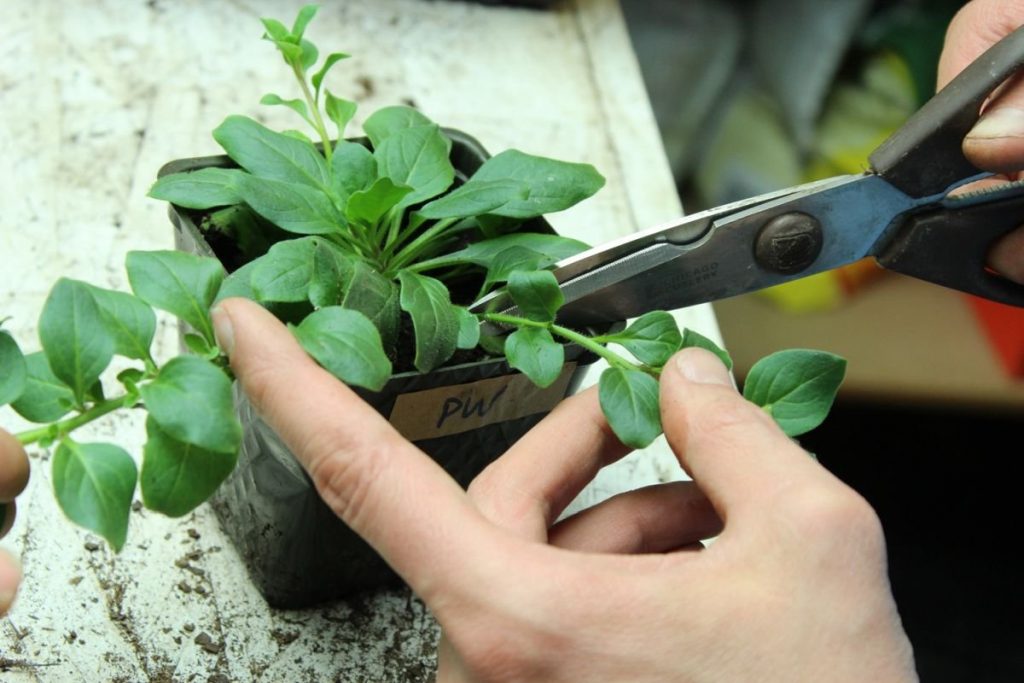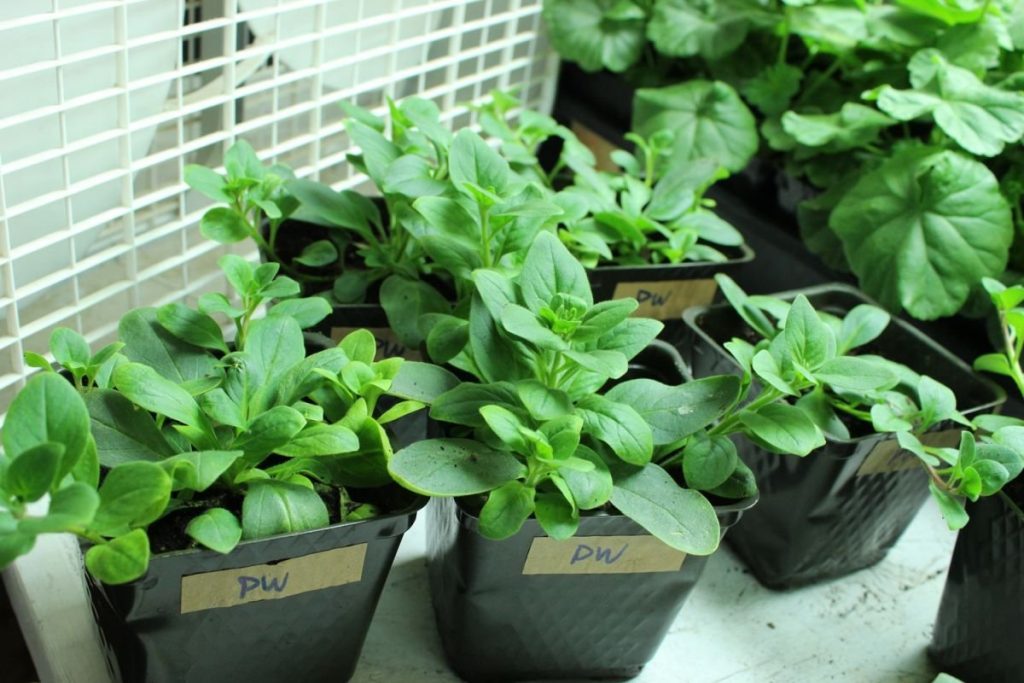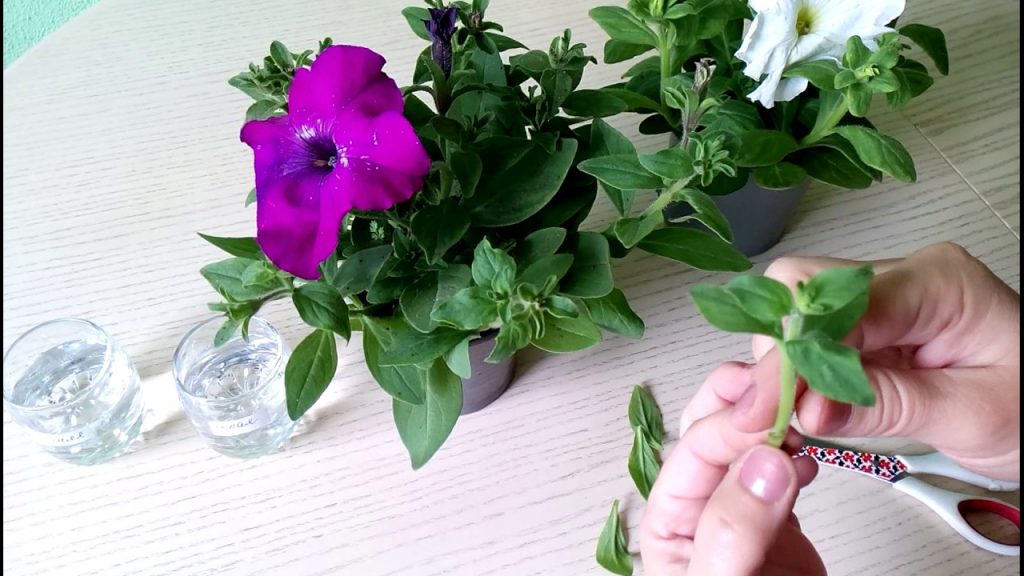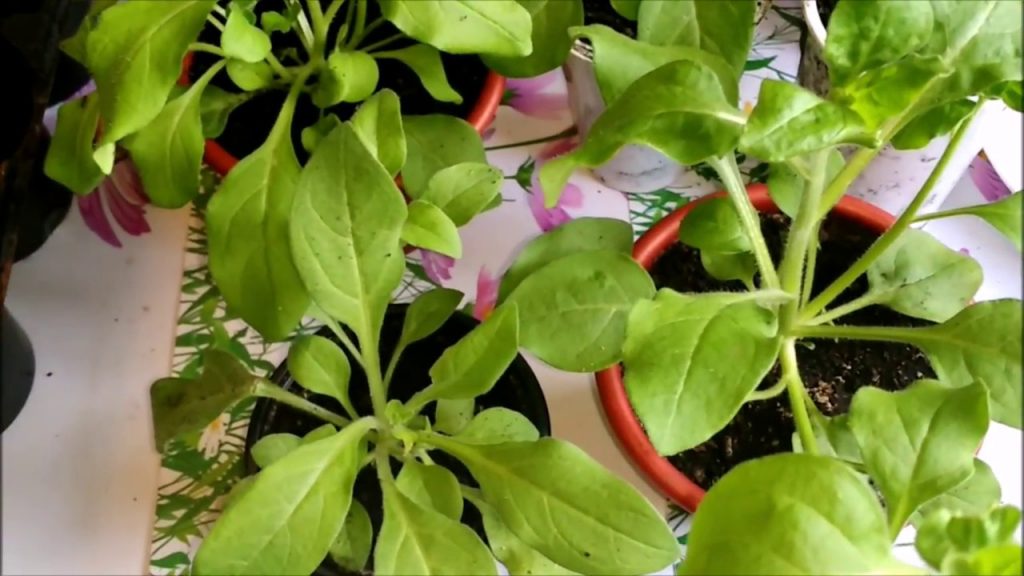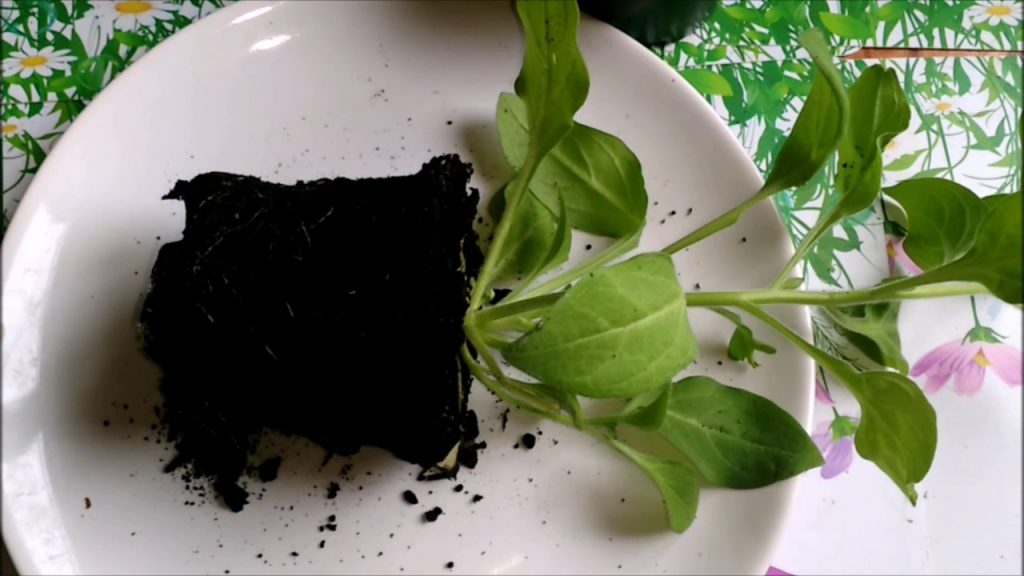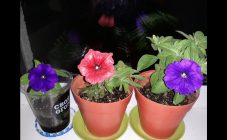Content:
Petunia can be seen everywhere: on flower beds, rabatkas, flowerpots, balconies, just hanging pots under the windows and even on lamp posts. Such popularity is not accidental, because it begins to bloom in the spring and does not stop doing it until the very frost. Perhaps the only drawback of this plant is too small seeds and the same seedlings with which you have to tinker. Cutting petunias makes it possible to propagate a favorite flower without seeds.
How to propagate petunia by cuttings correctly
Many flower crops are poorly adapted to rooting shoots, so their seedlings are obtained only from seeds. The indisputable advantage of petunias is that they perfectly tolerate such a favorite and affordable method. Benefits of grafting:
- there is no need to spend money on seeds;
- a plant grows from a cuttings much faster than from a seed;
- propagation by cuttings is much easier;
- the resulting new plant is stronger than a tiny seedling.
Cutting is the reproduction of an exact replica of the mother plant, while the seed can produce a cross-pollinated hybrid of unknown quality. In addition, seeds are not harvested from hybrid varieties, so cuttings are the only way for them. Thus, varietal properties will not be lost.
You can cut petunias of any varieties, but there are those that reproduce only by cuttings. They are called vegetative. Vegetative petunia - what is it? This variety is characterized by the following:
- plants have a small root system, they are able to grow abundantly, forming a kind of ball;
- the color of vegetative petunias is saturated, the flowers are varied in shape and color;
- do not produce seeds, or they are not suitable for obtaining a variety;
- when propagated by cuttings, they retain and transfer all the qualities of the original plant;
- have an early blooming period;
- do not need pinching;
- it is possible to overexpose the bushes in winter at home.
The most popular varieties are:
- The cardinal with bright crimson flowers and darker centers and veins blooms profusely and for a long time.
- Papaya has flowers of a rare bright orange color, the cap of flowers is so thick that no leaves are visible;
- Cascadis Rome is undemanding to care for, the flowers are dark lilac with a snow-white border, the bush is in the shape of a ball;
- Frillitunia - large-flowered variety, pink flowers, shaped like a ballerina's pack;
- Surfinia is resistant to diseases, after a rainstorm it does not lose its attractiveness.
These bright varieties are not demanding on light, and grow normally in the shade. They bloom at 19 ° C and above. But the culture is demanding to soil moisture, therefore drying out and waterlogging are not allowed. Also, the plant responds well to regular feeding with complex mineral fertilizers.
Basic rules for the propagation of petunias by cuttings
Cutting is a fairly simple method of propagation, but certain rules must be followed to guarantee success.
When and how to prepare petunia cuttings
If you take bushes sown in February for cutting off the shoots, then by the end of April you can already take cuttings from them, combining this process with the first pinching.From overwintered bushes, this can be done all year round, but the best time is late summer and early September.
For wintering, the plant needs to create favorable conditions, provide artificial lighting, maintain optimal temperature and humidity.
What if you need to propagate the plant in spring? Cuttings after cutting cannot be kept for a long time, keeping them from autumn is pointless. For spring reproduction, it is recommended to transplant the bushes into pots in the fall, after removing the old shoots and cutting off the young stems to 5 cm.
For the winter growth of petunias at home, a temperature of no more than 10-15 ° C is required. If this mode cannot be supported, then backlighting is needed. They also carry out regular, but infrequent watering, when the leaves of the plant are slightly drooping. In February, the bushes will grow, give new shoots.
The most suitable time and conditions for grafting
It is advisable to cut off shoots from already flowering plants. If properly cared for, petunia can delight the eye with flowers in winter. The bushes from which the cuttings will be taken are treated against pests and diseases. Before cutting, the plants are fed with macro- and microelements. A cut shoot gives an ovary after 2 months, therefore, in order to plant a seedling on a flower bed in May, cuttings are cut in March.
To keep the mother plant dormant until spring, it is placed in a cellar, occasionally watered. Until February, petunia may be leafless and look lifeless, but by spring it should come to life. Then the plant is transferred to a warmer place, they begin to look after and prepare for cuttings.
How to propagate petunia by cuttings in summer? The procedure is carried out in July - early August. This is done to preserve the variety, so as not to bring old bushes into the house. Cuttings are taken from them, and the resulting bushes are stored until spring as uterine ones.
Reproduction technique by cuttings
How to cut petunia, step by step instructions:
- Shoots with a length of 7 to 10 cm are considered suitable for rooting. Therefore, the choice of a cutting should be taken seriously, carefully inspected the shoots and choose healthy and strong ones. Priority should be given to those on the south side of the bush.
- The cut is made under the lower kidney. It should be oblique.
- The handle should have 2 - 3 internodes. The top of the cutting must be pinched so that the seedling does not stretch out in the future.
- The lower leaves of the shoot should be removed, leaving 1-2 pairs of upper leaves.
- It is advisable to immediately place the cut cuttings for rooting or to shorten the time between cutting and planting as much as possible.
The cut offshoots are rooted in two ways:
In water
How to cut petunia at home? The method of rooting in water is most suitable for this. Cuttings should have a length slightly longer than for rooting in the soil - at least 10 cm. A maximum length of 14 cm is allowed, since the elongated processes will take too long to take root. After removing the lower leaves, the cuttings are placed in glasses with cooled boiled water, 3-4 pieces each.
If the air in the room is dry, then the cups should be covered from above with plastic bags or cut bottles. This is necessary, especially in the first days after installation, when the rudiments of the roots have not yet formed. You shouldn't change the water, just add it in the process. When rooting in winter, the sprouts need illumination. Drafts are also undesirable for seedlings.
In the ground
The method is also simple and affordable, provided that the cultivation and cutting of the cuttings were done correctly.
Planting soil can be purchased at the store or made by yourself by mixing garden soil, humus and sand. A freshly cut cutting is planted in a pot with well-moistened soil. It is most convenient to stick each stalk into a separate vessel so that the sprouts do not intertwine with roots and then it is easy to plant them in a permanent place. When planting in common large containers, you need to leave a distance between plants of 2.5 - 3 cm.
The containers with the planted shoots are placed in partial shade for 15 days. For the first time, a mini-greenhouse from a cut plastic bottle will be very useful.
Petunia takes root well at a temperature of 24-26 ° C. With a short daylight hours, it is illuminated with fluorescent lamps so that the daylight time is 16 - 17 hours.
It is better to cut terry petunias in the summer, since before this time shoots of the required length will not grow on it. Ampel varieties immediately begin to grow long stems, therefore they are suitable for the procedure all year round and in any way. Cutting off shoots stimulates the growth of new ones, so this not only does not harm the plant, but even benefits it.
Ampel varieties can be propagated by layering. To do this, drop the stem, retreating 5 - 6 pairs of leaves, in the internode. A little later, roots are formed at the place of the digging. After rooting, the sprout is cut off and then proceed in the same way as with a rooted cuttings. After about 7 days, roots should appear on the stems, and after 10 days it is ready for transplanting. First, it is better to transfer the sprout into a larger container and hold it in greenhouse conditions for another 2 - 3 weeks, and then plant it in open ground.
Growing a plant from a cutting
When the sprouts have taken root, and they have 2-3 pairs of leaves, you need to pinch the bush. Re-pinching is carried out 15 days after landing in a new place.
It is recommended to transplant rooted cuttings into open ground when the air temperature reaches 15 ° C. Following the planting, the bushes are fed. This procedure is carried out approximately once every 2 weeks during the entire growing season.
Advantages and disadvantages of grafting
Reproduction of petunia by cuttings in summer, spring or autumn is much easier and more reliable than growing it from seeds. The advantages of this method include the fact that with it flowering begins much earlier. In addition, there are many varieties, the most valuable and beautiful, that can only be grown using this method.
The only downside can be the fact that much more plants are obtained from seeds than from cuttings. But this matters for the mass cultivation of seedlings, and for home breeding, a couple of bushes are sufficient.
Having learned how petunia reproduces, any grower will definitely want to try this simple method. If you do everything right, then the whole summer period you can enjoy the beauty and aroma of these wonderful flowers!
